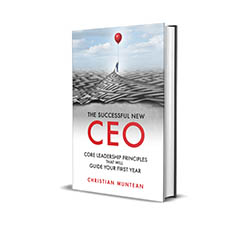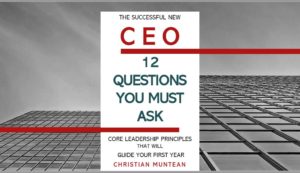How to Choose a Rockstar CEO/President/Managing Partner

The storm surge of the Silver Tsunami has begun and most organizations are woefully unprepared.
75% of all business owners and senior executives are Baby Boomers. Most are thinking about succession – whether they plan on retiring or just moving up out of day-to-day management. But they are finding this process to be more difficult than anticipated.
Why? Because good help is hard to find.
And it is hard to let go.
And maybe you aren’t attractive enough.
Just telling it like it is…
First. Why is good help hard to find?
Kids These Days: The sociology behind finding good leaders and actions you need to take
For most of human history, there were more younger people than older people. But then the massive population expansion of the Baby Boomer generation came along.
As Boomers aged, they found that the world was designed to fit the smaller WWII generation. There were fewer ladders to climb and fewer rungs on those ladders. Opportunity was there but needed to be competed for. As a result, they tended to “dog-eat-dog” their way up those ladders – or become entrepreneurs and build ladders of their own.
Boomers also had proportionally fewer children. This new generation (cleverly called Gen X) was significantly smaller than their parents’ generation. This is my generation.
Gen Xers have grown up in a world where there are more ladders and rungs than people to fill them. It’s a sellers’ market. If you are halfway decent at what you do – you can choose where you want to be.
If a company has an unhealthy culture, or an organization creates unnecessary or senseless hurdles to climb, it’ll lose ideal leadership prospects. Simply put – you’ll attract and retain the people you deserve.
Then came the Millennials. The oldest of which are just starting to have the age and experience where they are being considered for some executive positions.
All of this to say – the leadership market has changed. Employers used to be able to require employees to compete to earn a leadership position. Now employers need to compete to find ideal, new leaders who are willing to come work with them.
Tip: The good news is that if you invest in becoming a magnetic organization that is able to attract and retain the best people – it won’t be hard to find them. Becoming “magnetic” is about culture and not about kegerators and ping-pong tables in the workplace. Read more.
Finding Leaders of the Future: Look for this…and avoid that…
When looking for an incoming leader, don’t look for a leader who will do what the last successful leader did. Someone who can win yesterday’s battles won’t necessarily help you be successful with tomorrow’s.
By the same token, don’t bring in a leader who was merely a faithful executor of the previous leader’s vision. While good executors are invaluable, the skills and mindsets that make them so effective also work against them when there is a need for vision and action.
This is why so many “second-gen” companies stall out.
Tip: Choose a leader who can see ahead and is ready for the opportunities and challenges of the future.
Use Your Words: Clarify expectations so a new leader can excel.
Don’t assume that the incoming leader can read your mind.
They can’t. Filling an executive role is more than just fulfilling basic job requirements. Take time to clarify and communicate your priorities as well as how success will be measured for the new leader.
This last point is critical. Many partners/owners/boards don’t define success very clearly. It’s a surprisingly difficult exercise for many to define success. Many are so accustomed to just running hard on their hamster wheels that they rarely stop to think about where they are trying to get to and why.
If you don’t know where you want to go or why – neither will the leader you ask to captain your ship.
Tip: Define what success should look like and how you will recognize it.
Poorly Suited Armor: Differentiating between what works and what works for you.
This next point is particularly important for owners, founders, or strong leaders who are bringing in a successor into the CEO position:
Do you remember the story of David and Goliath? Most people remember the part of the story where a shepherd boy defeated a giant in battle.
But before David went to battle with Goliath, he was brought to meet his king, King Saul.
King Saul didn’t quite know what to make of David or his confidence. But he also didn’t have anyone in his army who was willing to fight Goliath. David was willing, so Saul went with it.
King Saul was a tall, full-grown man. He offered his armor to David. David tried on the king’s armor, but it didn’t fit. David said, “I can’t walk in these. I’m not used to them.” And he went to and won the battle without the armor.
There are tactics or approaches that you use or that leadership has used that have worked well in the past. Some may have been carefully thought through or designed.
But many of those were personality or situationally dependent. A different leader will often need the freedom to approach things differently.
Tip: Let the successor “try the armor on.” If it doesn’t fit, don’t make them wear it.
First Among Equals: Effective executive leadership among partners or shareholders
Organizational cultures and structures are endlessly fascinating to me. People find so many creative ways to organize themselves.
When it comes to the topic of how partners or shareholders select one from amongst themselves to lead – there is an almost endlessly broad range of options for how that can turn out. There isn’t room to explore all of this here. However, these four tips will help tremendously.
Character, transparency, and communication: Choose someone who has character (especially humility and integrity). Keep processes and objectives as open and visible as possible. Find someone who is an effective and timely communicator.
Clear Roles, responsibilities, and expectations: Ambiguity breeds conflict. Clarify the leader’s roles, responsibilities, and expectations of the leader in terms of their behavior and performance.
Differentiate management from ownership/governance: One of the most common points of contention between partners is the “dual roles” they share. When is a decision an ownership decision? When is it a management decision? What happens if people are “equals” in the board room or on the shareholder list but not equal on the organizational chart?
Don’t figure these things out as you go – it consistently lands people in intractable conflicts. As well as you can, differentiate the roles and the decisions and map out how conflicts will be handled.
Decision Making: Be very clear about which decisions belong solely to the leader, which do they consult with other partners or shareholders, and which belong to the board or the entire partnership/shareholdership.
Choosing a Leader
Choosing your leader is one of the most strategically important decisions you’ll make. Incorporate the considerations above to ensure you make a decision you are grateful for years from now.
Take good care,
Christian
P.S. For a ridiculously useful tool you can use to identify your rockstar leader, read How To Pick A Leader: The Leadership Selection Funnel
Are you interested in learning more about becoming a successful CEO? If so, get a free copy of my book The Successful New CEO. Not a new CEO? I’ve been told by “old hands” that they felt any CEO should read this. So, click here to get your copy today.
by “old hands” that they felt any CEO should read this. So, click here to get your copy today.
Let’s connect.
I’m passionate about helping leaders to create workplaces they love going to and increasing the value of the services they offer. My results-oriented approach is tailored to each client’s specific situation and needs. As a leadership coach, I have developed a wealth of resources to help you and your team grow and become stronger.
Weekly Newsletter – sign up to receive my weekly articles addressing critical leadership challenges and issues.
The Leadership Coach Podcast – In my podcast, we explore effective, high-impact, and enjoyable leadership. Subscribe.
Resources – Visit my website’s Resources page for e-books, webinars, training, and leadership coaching opportunities for you and your team.
There are 𝟭𝟮 𝗰𝗿𝗶𝘁𝗶𝗰𝗮𝗹 𝗾𝘂𝗲𝘀𝘁𝗶𝗼𝗻𝘀 to ask before accepting a new CEO position. Do you know what they are? Instantly download my free e-book here.
Find the value of your company with my free assessment tool: The Value Builder System
The Value Builder System™ is a 13-minute online questionnaire that evaluates your business on the eight factors that contribute more to its attractiveness and value. These factors are scored on a scale of 1-100. Businesses that score over 80 are likely to command 70%-100% higher value than others.
Opportunities
Free Resource: How To Accomplish More Without Doing More is a workbook I created to walk leaders through a process of helping you own your calendar, liberate your time, and still get more done. Download it for free!
Executive and Leadership Coaching: Do you feel overwhelmed? Are you not getting the results you expect from the effort you are putting in? Do you find yourself facing similar challenges time and time again? Would you like to change specific ways of relating or reacting? If you would like to experience predictable, measurable growth Contact me.
Profitable Exit Strategy Workshop: Are you a business owner or partner? Over 55? Starting to think about exiting your business or active management in the next 3-5 years?
- Curious about what your business might be worth?
- Would you like to discover the specific steps you need to take to increase its value and become highly attractive to a buyer?
- Are you planning on handing it over to family or employees and you want to ensure long-term success?
If so, contact me now
Categories
Get Christian’s Newest Book: Train to Lead

Download my free 10-page eBook:
How To Accomplish More Without Doing More:
Eight Proven Strategies To Change Your Life
Discover how to save eight hours during your workweek-even if you're too busy to even think about it. The resource every maxed out executive needs.

